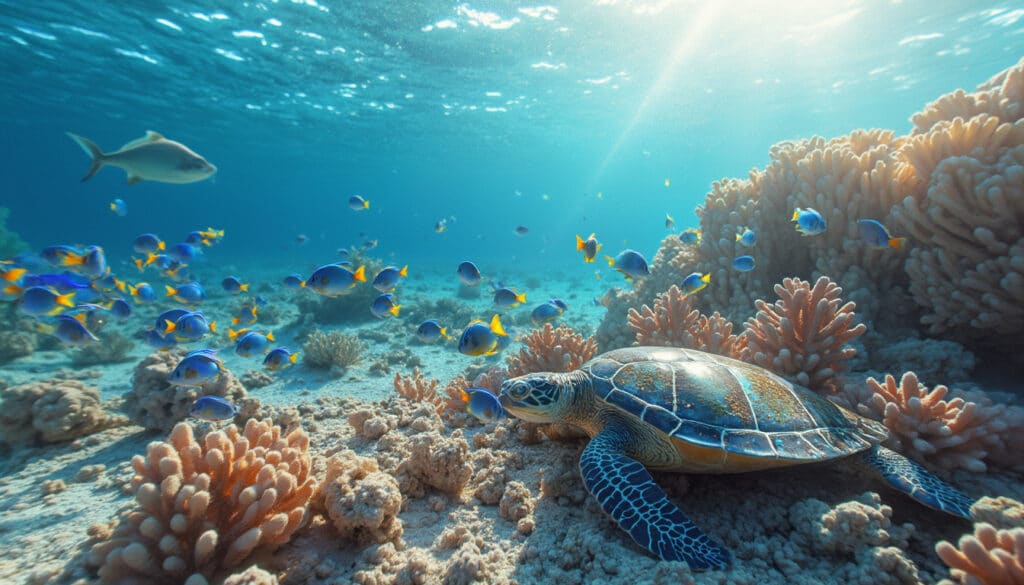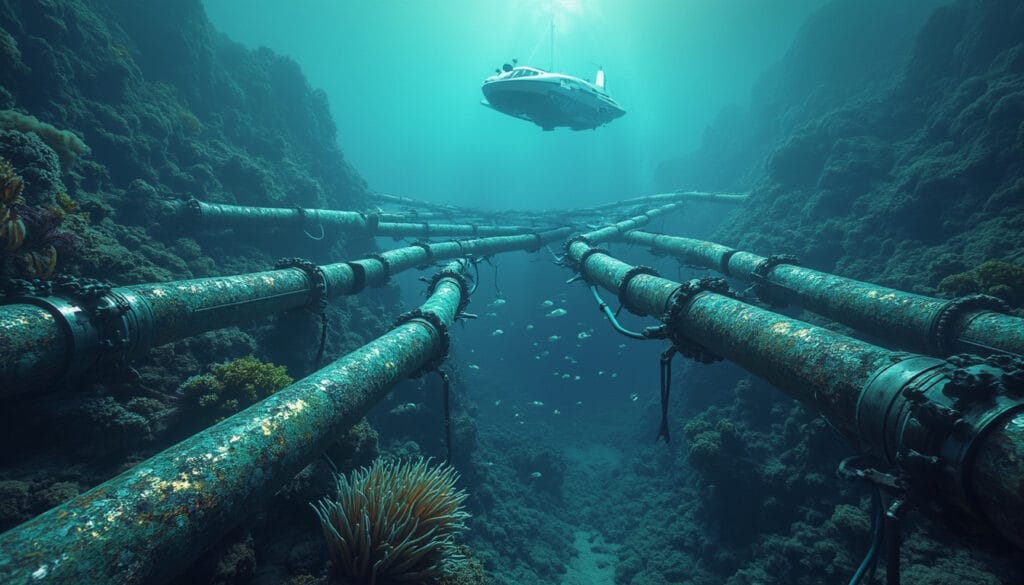“`html
The marine world is in crisis. The Great Barrier Reef, an emblematic symbol of biodiversity, is undergoing a devastating phenomenon. Record ocean temperatures are accelerating coral bleaching.
Following this temperature rise, more than 90% of the studied reefs show signs of decline. This phenomenon, caused by the loss of symbiotic zooxanthellae, leads to alarming discoloration of corals. Scientists are sounding the alarm in the face of this massive bleaching event. Coral reef conservation is now an environmental emergency on a global scale.
The bleaching of corals is an alarming phenomenon currently affecting two of the world’s largest coral reefs: Ningaloo Reef in Australia and the Great Barrier Reef. These poignant images and recent videos show the extent of this decline, highlighting the urgency of acting to preserve these fragile ecosystems.
what is coral bleaching and why is it concerning?
Coral bleaching occurs when corals expel their symbiotic algae, known as zooxanthellae, in response to environmental stressors such as increased water temperatures. These algae are essential because they provide corals with their vibrant color and a significant portion of their energy through photosynthesis. Without them, corals turn white and become more vulnerable to diseases and mortality.
This phenomenon is concerning because coral reefs harbor incredible marine biodiversity. They serve as a refuge for thousands of marine species, contribute to coastal protection against erosion, and play a crucial role in the local economy through tourism and fishing. The loss of coral reefs leads to a collapse of marine ecosystems, affecting not only wildlife but also human communities that depend on these resources.
what are the Ningaloo and Great Barrier Reef coral reefs?
The Ningaloo Reef is located along the west coast of Australia and is recognized for its exceptional biodiversity and beautiful underwater landscapes. It is the second-largest coral reef in the world after the Great Barrier Reef. Ningaloo Reef is particularly famous for its encounters with whale sharks and manta rays, attracting thousands of tourists each year.
The Great Barrier Reef, on the other hand, is the largest coral reef system in the world, stretching over 2,300 kilometers along the east coast of Australia. It is a UNESCO World Heritage site and consists of over 2,900 individual reefs and 900 islands. The Great Barrier Reef is a symbol of marine richness and natural beauty, but it is sadly famous for its rapid decline due to climate change.
what are the main causes of coral bleaching?
The primary trigger for coral bleaching is climate change, which leads to increased sea water temperatures. Marine heatwaves, in particular, force corals to expel their symbiotic algae to survive, depriving them of their main source of food and coloration. In addition to high temperatures, other factors exacerbate coral bleaching:
pollution and water quality
Pollution, particularly from chemical discharges, plastics, and nutrient runoff from agriculture, disrupts the balance of marine ecosystems. Polluted waters favor the proliferation of harmful algae that can suffocate corals and alter the living conditions necessary for their health.
human activity and overexploitation
Human activity, including overfishing, unsustainable tourism, and coastal development, exerts additional pressure on coral reefs. The destruction of surrounding habitats reduces breeding and fertilization areas for marine species, further weakening coral ecosystems.
what is the impact of coral bleaching on marine ecosystems?
Coral bleaching has profound repercussions on marine ecosystems. Coral reefs are often described as the “tropical rainforests of the sea” due to their biological diversity. When a reef bleaches, it loses not only its color but also its capacity to support a multitude of species. Fish, invertebrates, and other organisms depend on corals for food, shelter, and reproduction. The disappearance of corals leads to the collapse of marine food chains, affecting the survival of many species.
Moreover, coral reefs play a crucial role in protecting coastlines against storms and erosion. Their degradation reduces this natural protection, exposing coastal areas to increased risks of damage from cyclones and waves. This has serious economic consequences for human communities living near the coast, which may lose vital infrastructure and suffer economic losses related to tourism and fishing.
what are the long-term consequences for biodiversity if bleaching persists?
If the phenomenon of coral bleaching persists, the long-term consequences for marine biodiversity will be catastrophic. The loss of coral reefs could lead to the extinction of many species that depend on these habitats for survival. Tropical fish, mollusks, crustaceans, and other organisms could disappear, reducing genetic diversity and the resilience of marine ecosystems to environmental changes.
Additionally, the decline in marine biodiversity affects the overall health of the oceans. Coral reefs play a key role in nutrient cycling and carbon sequestration. Their decline disrupts these cycles, further exacerbating climate change and the degradation of marine habitats. From a human perspective, the loss of marine biodiversity reduces the food and economic resources that millions of people around the world depend on.
what measures are being taken to combat coral bleaching?
In light of the urgency of coral bleaching, several measures are being implemented to try to curb this phenomenon and restore coral ecosystems:
reducing greenhouse gas emissions
Combating climate change involves reducing greenhouse gas emissions. International initiatives like the Paris Agreement aim to limit global warming by encouraging countries to adopt sustainable energy policies and invest in renewable energy.
coral restoration projects
Active coral reef restoration projects are underway in several regions. These projects include coral cultivation in laboratories, transplanting heat-resistant corals, and creating new habitats to promote the recolonization of marine species.
management and regulation of human activities
The establishment of Marine Protected Areas (MPAs) allows for the regulation of human activities such as fishing and tourism, thus reducing pressure on coral reefs. Strict regulations on pollution and waste management also help improve water quality and create more favorable conditions for coral health.
what is the role of renewable energy in protecting coral reefs?
Renewable energy plays an essential role in protecting coral reefs by contributing to the reduction of greenhouse gas emissions responsible for coral bleaching. By developing clean energy sources such as wind, solar, and hydropower, we can decrease our reliance on fossil fuels and mitigate climate change.
Furthermore, innovation in the field of renewable energy can offer local solutions for coastal communities. For example, the installation of offshore wind farms can provide stable and sustainable energy without the destructive impacts on marine ecosystems. In addition, smart energy management technologies allow for optimizing consumption and reducing carbon emissions at local levels.
Finally, investing in renewable energy promotes research and development of new technologies aimed at protecting and restoring coral reefs. Scientific advances in heat-resistant materials and coral cultivation methods can be directly applied to reef restoration efforts, thereby enhancing their resilience to environmental stressors.
Articles similaires
Thank you!
We will contact you soon.














